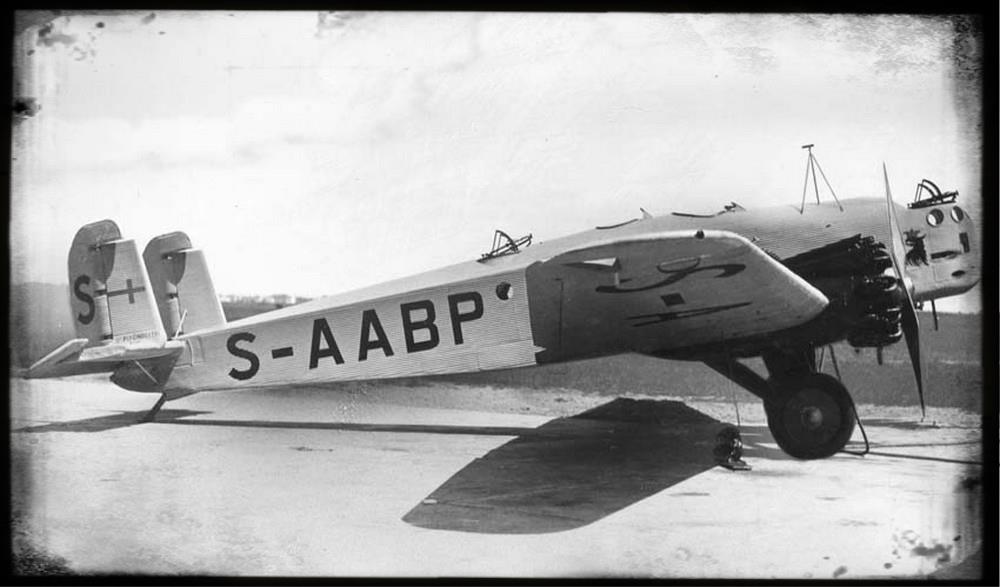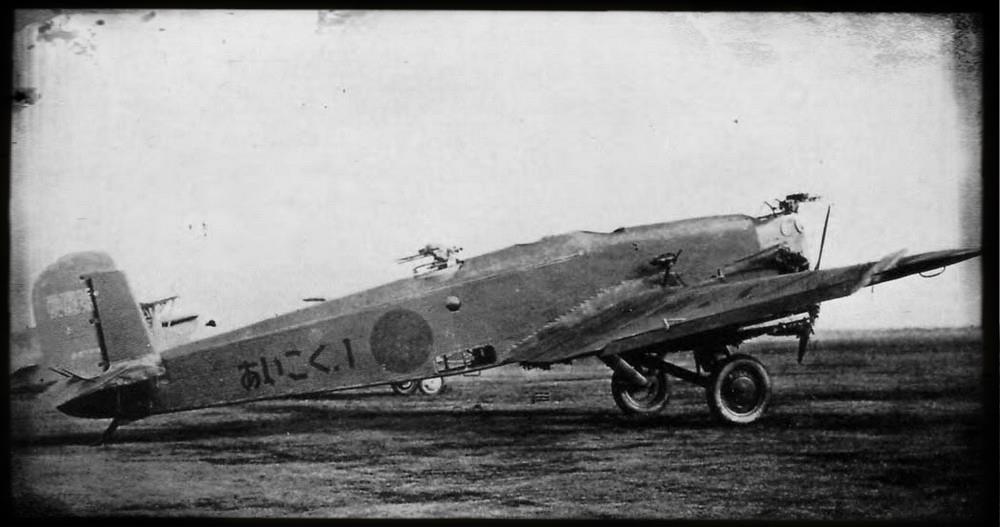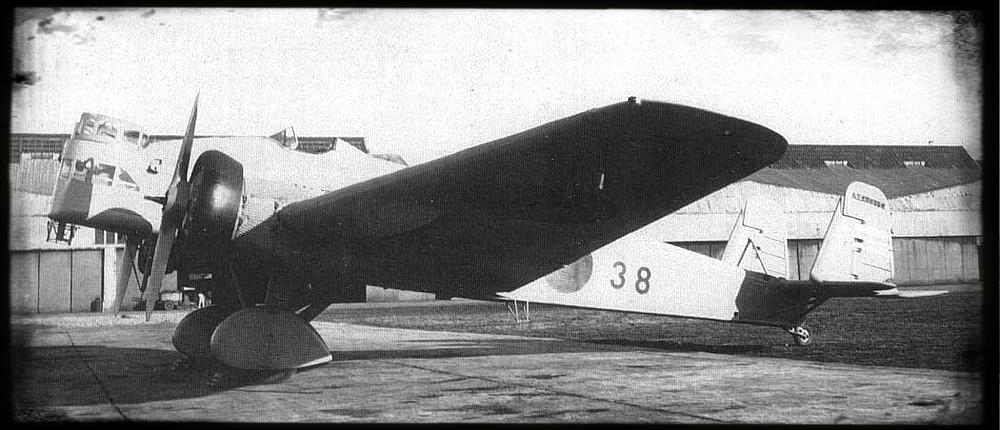Junkers S36 / K37
see also: Junkers S36 / K37 Production List / Junkers S36 / K37 Model Kits
cantilever monoplane Postal, Survey and Bomber Aircraft , F/F 5 Sep 1927
developed by Junkers Flugzeugwerke in Dessau by Zindel

Junkers S36 Civil Version
Historical Background:
The Junkers S36 was a further developement of the Junkers A32. Based on the A32 design ideas for a postal and survey aircraft, the S36 was developed for higher payload. The S36 was the first and only aircraft design of Hugo Junkers, which was equipped with two engines.While the aircraft was offically designed as a civil aircraft, it offered a lot of military features like the double tail unit (taken over from the G31), which was usefull for machine gun fire to the back sides and the forward seat was located in a glazed nose section of the aircraft. The prototype was first flown on Sept. 5th 1927. 
Junkers / A.B. Flygindustri K37 Unarmed Military Version
The S36 was transfered to A.B. Flygindustri at Limhamn, where machine guns and other military equipments were added. This military version of the S36 was designated as K37. Due to its double engines, the S36 was capable to climb to altitudes, which were not reachable for the fighter aircraft of 1927. But as soon as 1930 this advantage of the S36/K37 dropped by some British developements like the Bristol Bulldog. While the K37 was the first Junkers aircraft, which fullfilled the requirements for military aircraft of the twenties, Junkers was not successfull in selling this aircraft. At least two S36/K37s were built. 
Mitsubishi K37 Heavy Bomber Aircraft
Finally the Japanese Army was interested in the K37 bomber version. At least one, maybe two K37 were delivered to Japan in February 1931, where Mitsubishi bought a license for the production of the K37. This K37 was used for test missions during the Manchurian war in 1931 and showed good capabilities. The Japanese Army advised Mitsubishi to construct a heavy and a light bomber version of the K37. The Heavy Bomber Ki 1 showed the principle outline of the K37 but was much larger than the origin aircraft. It flew first in August 1932. A total of 219 Ki 1 heavy bombers were built between March 1933 and April 1936. Nevertheless the Ki 1 was to heavy to meet the demands of the Japanese Army. Especially this aicraft was not capable to maintain altitude during single engine flights. 
Mitsubishi Ki2
The light bomber design Ki 2 was started in Sept. 1932. It was much smaller than the Ki 1 and was strongly focused on the original K37. While the fuselage was mainly redesigned by Mitsubishi, the wings of the K37 were kept unchanged except of the additional ailerons. In May 1933 the Ki 2 flew first. A total of 113 aircraft plus additional 13 aircraft built at Kawasaki of this initial Ki 2-1 aircraft were built until 1936. A further improved version Ki 2-2 with retractable undercarriage, Mitsubishi engines, enlarged canopies was introduced in 1936 of which 61 aircraft were built. The Allied codename for the Ki2 was Louise.
Technical Data
| Aircraft | year | engine | length in m | span in m | wing area im sqm | net weight in kg | payload in kg | seats | speed in km/h | range in km |
|---|---|---|---|---|---|---|---|---|---|---|
| S36 | 1927 | 2 x Jupiter VI | 11,40 | 20,15 | 54,00 | 2600 | 1700 | 3 seats | 254 | 1100 |
Junkers S36 Designators:
- S36, civil prototype from Dessau
- K37, Military Version converted at Limhamn
- Ki1, Mitsubishi licence production in Japan
- Ki2, Mitsubishi license production in Japan
Weblinks:
- Airwar.ru - S36 Brief Story, Photos (Russian)
- Airwar.ru - K37 Story, Photos, Data (Russian)
- Junkers.de - S36 Story, Data
- Junkers.de - K37 Story, Data
- Wikipedia.org - K37 Story, Data
- Fliegerweb.com - S36 Story, Data, Photos
- Ashai Airplane Museum - Japanese Ki1/Ki2 (Japanese)
- Alternative Geschichte - K37 Entwicklung (russian)
- Ikazuchi - Ki1/Ki2 in Japan
- Blog Fuerzas de la Argentina - a lot of K37 photos (Spanish)
Literature:
- National Advisory Commitee for Aeronauticas
The A.B. Flygindustri K37 (Swedish Junkers)
Aircraft Circular No. 104, 1929
Download PDF here: NASA.GOV
introduced Jul 1996, transfered Jun 2017
http://hugojunkers.bplaced.net/
contents last updated 22 Feb 2003

